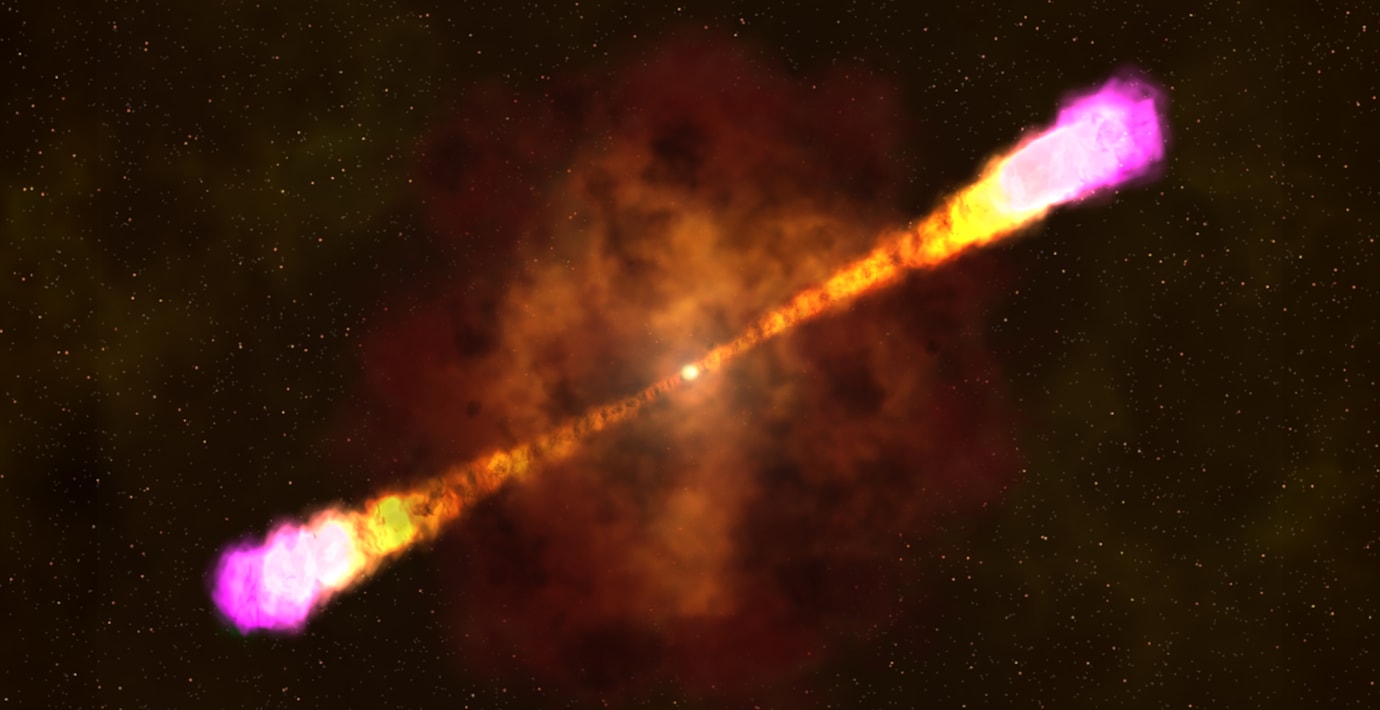
Forskare tror sig ha sett glimt av mörk materia
En japansk astrofysiker kan ha upptäckt det första direkta beviset på mörk materia, rapporterar NBC News. Tomonori Totani vid Tokyos universitet har analyserat 15 års data från Nasas Fermiteleskop och funnit ett svagt sken av gammastrålning i Vintergatans närhet.
Totani menar att ljuset kan komma från kollisioner mellan hypotetiska partiklar som kallas WIMP:ar, som enligt teorin utgör mörk materia.
– Det är som att vinna på lotto, säger han.
Flera forskare uttrycker sig dock med försiktighet. Fysikern David Kaplan vid Johns Hopkins-universitetet säger att för lite ännu är känt om gammastrålning för att dra slutsatser om mörk materia.
Att verkligen bevisa mörk materia skulle vara ett av vår tids största vetenskapliga genombrott.
bakgrund
Weakly interacting massive particle (WIMP)
Wikipedia (en)
Weakly interacting massive particles (WIMPs) are hypothetical particles that are one of the proposed candidates for dark matter.
There exists no formal definition of a WIMP, but broadly, it is an elementary particle which interacts via gravity and any other force (or forces) which is as weak as or weaker than the weak nuclear force, but also non-vanishing in strength. Many WIMP candidates are expected to have been produced thermally in the early Universe, similarly to the particles of the Standard Model according to Big Bang cosmology, and usually will constitute cold dark matter. Obtaining the correct abundance of dark matter today via thermal production requires a self-annihilation cross section of
⟨
σ
v
⟩
{\displaystyle \langle \sigma v\rangle }
≃ 3×10−26 cm3⋅s−1, which is roughly what is expected for a new particle in the 100 GeV/c2 mass range that interacts via the electroweak force.
Experimental efforts to detect WIMPs include the search for products of WIMP annihilation, including gamma rays, neutrinos and cosmic rays in nearby galaxies and galaxy clusters; direct detection experiments designed to measure the collision of WIMPs with nuclei in the laboratory, as well as attempts to directly produce WIMPs in colliders, such as the Large Hadron Collider at CERN.
Because supersymmetric extensions of the Standard Model of particle physics readily predict a new particle with these properties, this apparent coincidence is known as the "WIMP miracle", and a stable supersymmetric partner has long been a prime WIMP candidate. However, in the early 2010s, results from direct-detection experiments and the lack of evidence for supersymmetry at the Large Hadron Collider (LHC) experiment have cast doubt on the simplest WIMP hypothesis.
bakgrund
Mörk materia
Wikipedia (en)
In astronomy and cosmology, dark matter is an invisible and hypothetical form of matter that does not interact with light or other electromagnetic radiation. Dark matter is implied by gravitational effects that cannot be explained by general relativity unless more matter is present than can be observed. Such effects occur in the context of formation and evolution of galaxies, gravitational lensing, the observable universe's current structure, mass position in galactic collisions, the motion of galaxies within galaxy clusters, and cosmic microwave background anisotropies. Dark matter is thought to serve as gravitational scaffolding for cosmic structures.
After the Big Bang, dark matter clumped into blobs along narrow filaments with superclusters of galaxies forming a cosmic web at scales on which entire galaxies appear like tiny particles.
In the standard Lambda-CDM model of cosmology, the mass–energy content of the universe is 5% ordinary matter, 26.8% dark matter, and 68.2% a form of energy known as dark energy. Thus, dark matter constitutes 85% of the total mass, while dark energy and dark matter constitute 95% of the total mass–energy content. While the density of dark matter is significant in the halo around a galaxy, its local density in the Solar System is much less than normal matter. The total of all the dark matter out to the orbit of Neptune would add up about 1017 kg, the same as a large asteroid.
Dark matter is not known to interact with ordinary baryonic matter and radiation except through gravity, making it difficult to detect in the laboratory. The most prevalent explanation is that dark matter is some as-yet-undiscovered subatomic particle, such as either weakly interacting massive particles (WIMPs) or axions. The other main possibility is that dark matter is composed of primordial black holes.
Dark matter is classified as "cold", "warm", or "hot" according to velocity (more precisely, its free streaming length). Recent models have favored a cold dark matter scenario, in which structures emerge by the gradual accumulation of particles.
Although the astrophysics community generally accepts the existence of dark matter, a minority of astrophysicists, intrigued by specific observations that are not well explained by ordinary dark matter, argue for various modifications of the standard laws of general relativity. These include modified Newtonian dynamics, tensor–vector–scalar gravity, or entropic gravity. So far none of the proposed modified gravity theories can describe every piece of observational evidence at the same time, suggesting that even if gravity has to be modified, some form of dark matter will still be required.
Omni är politiskt obundna och oberoende. Vi strävar efter att ge fler perspektiv på nyheterna. Har du frågor eller synpunkter kring vår rapportering? Kontakta redaktionen


